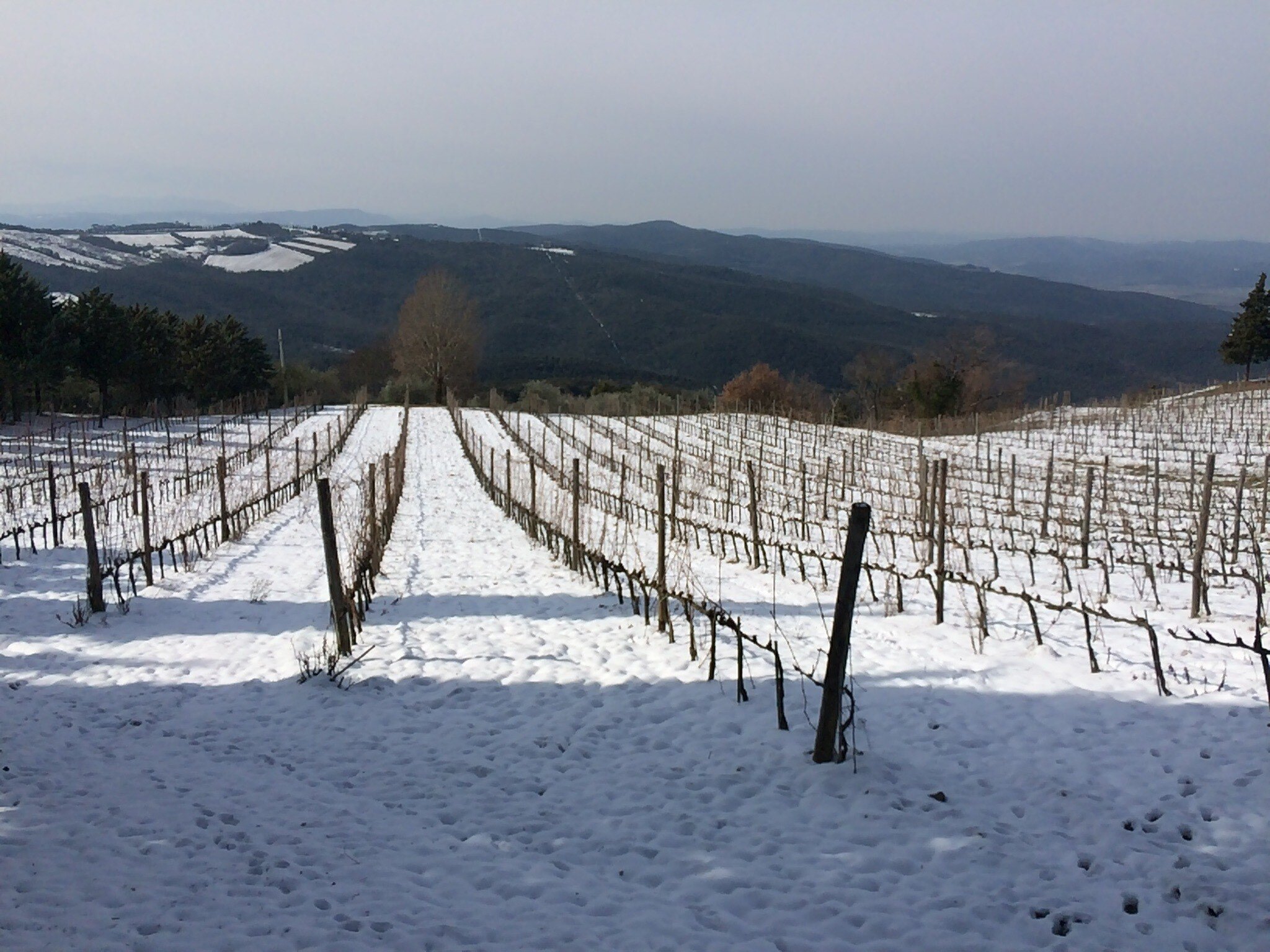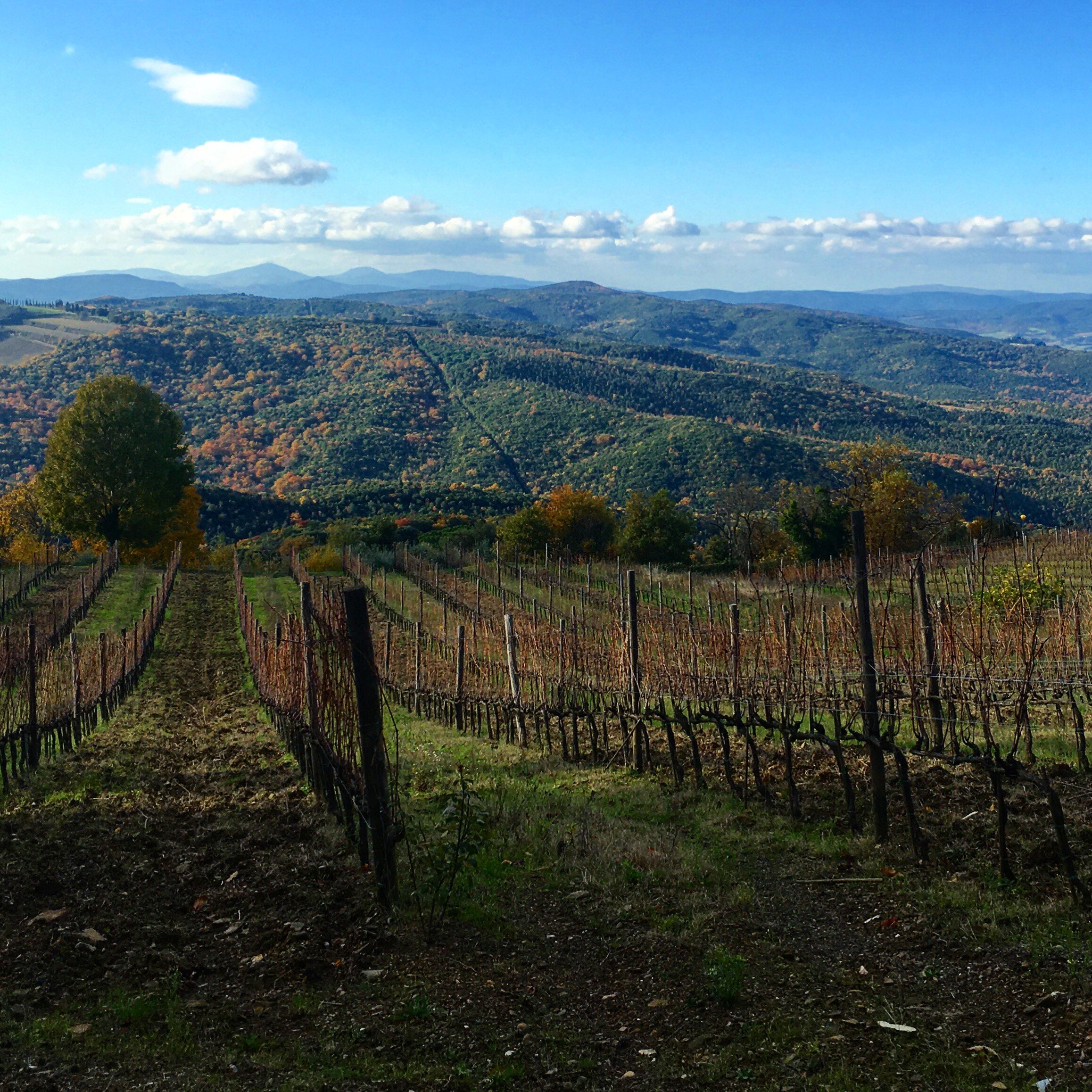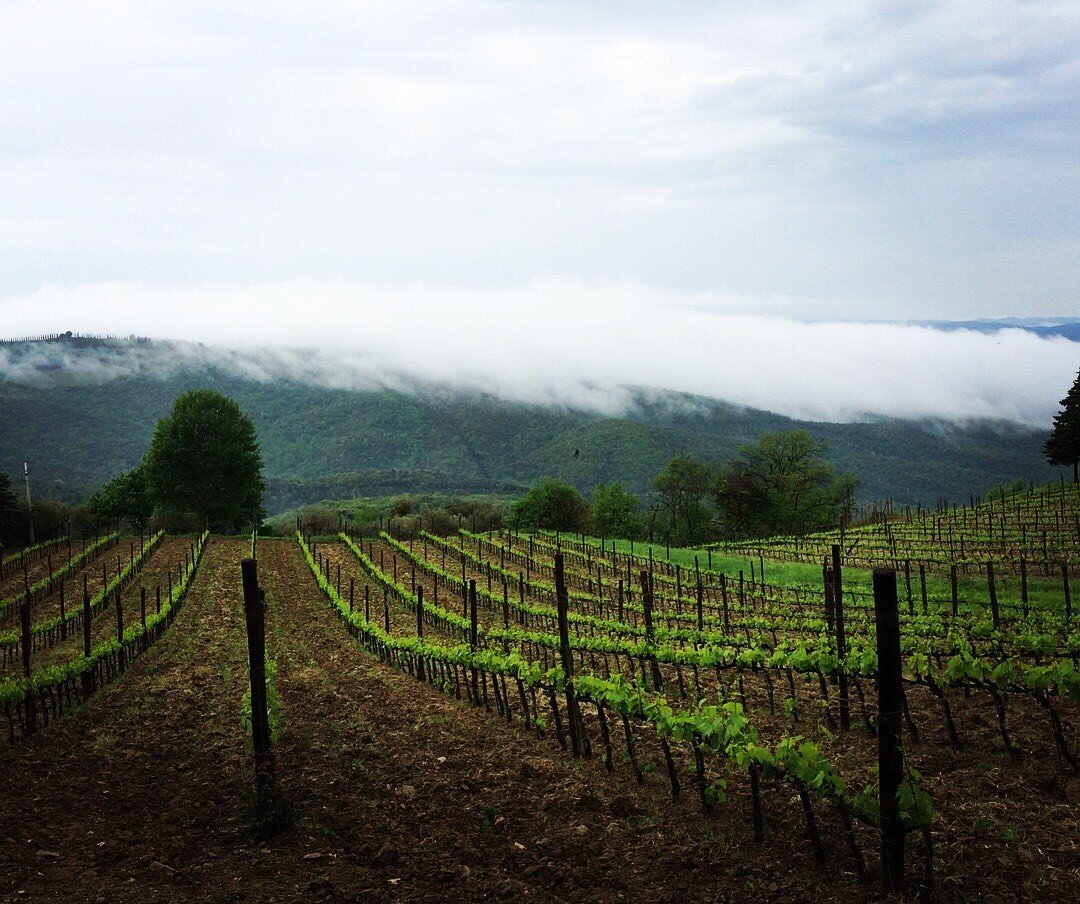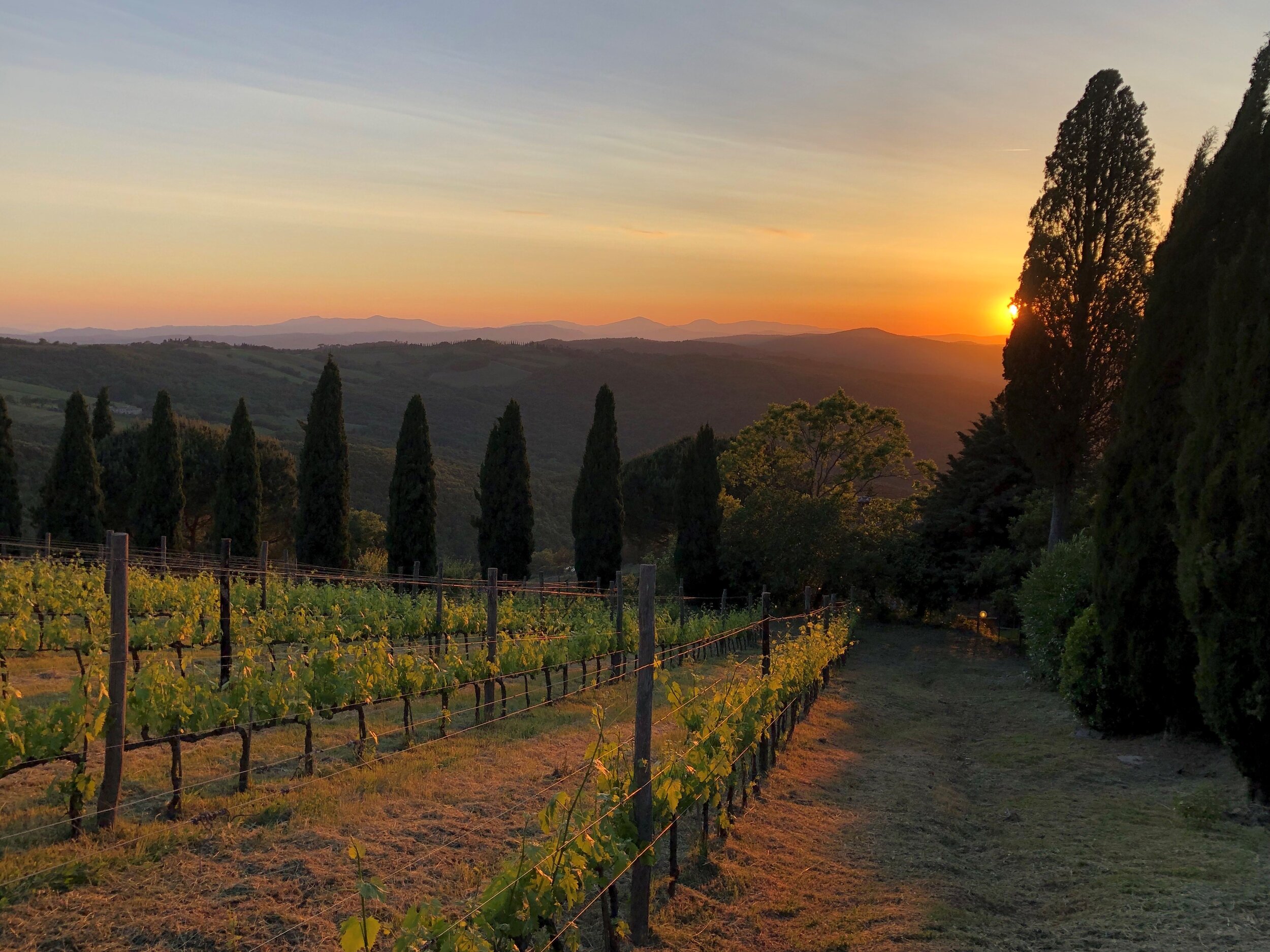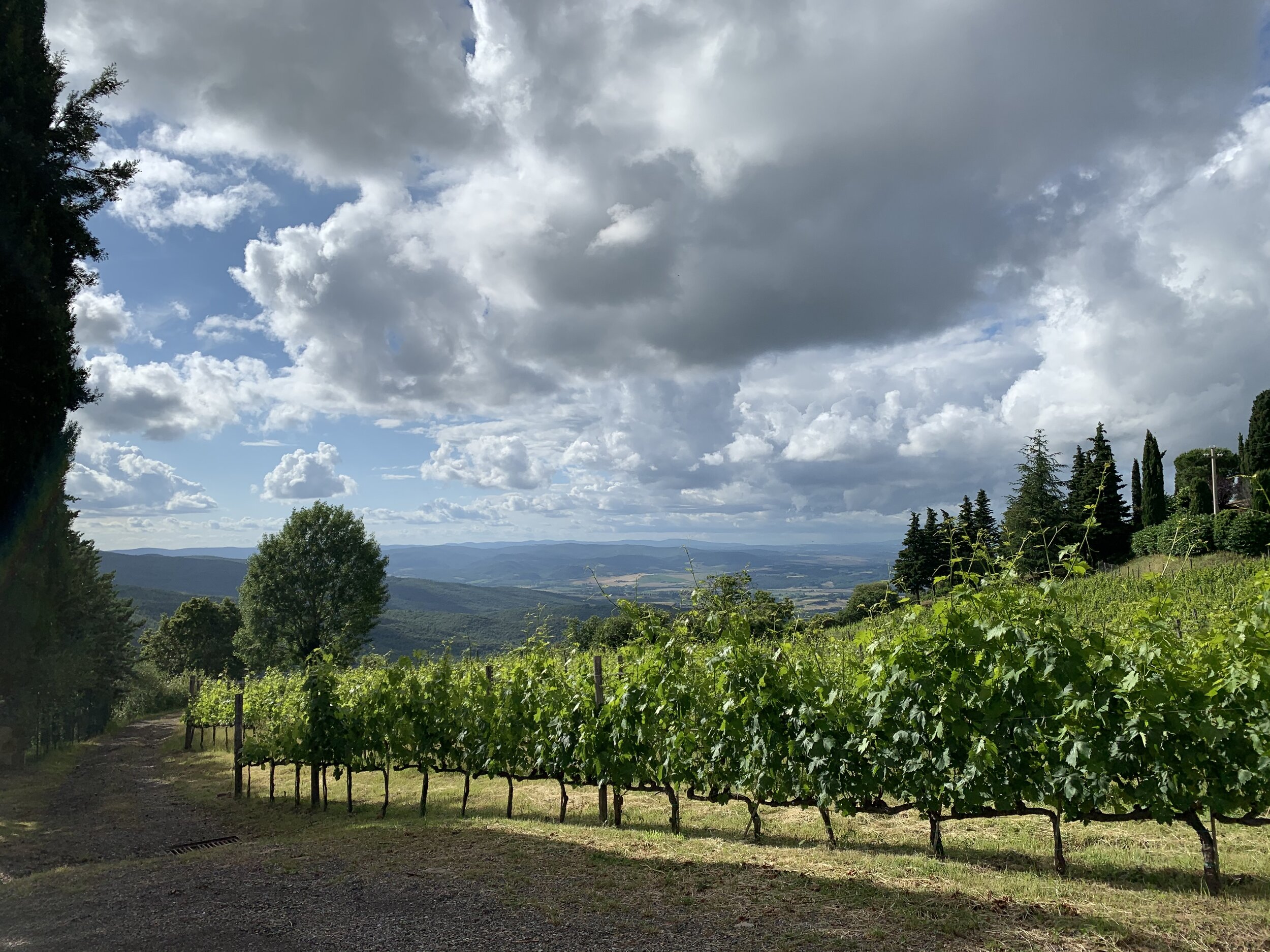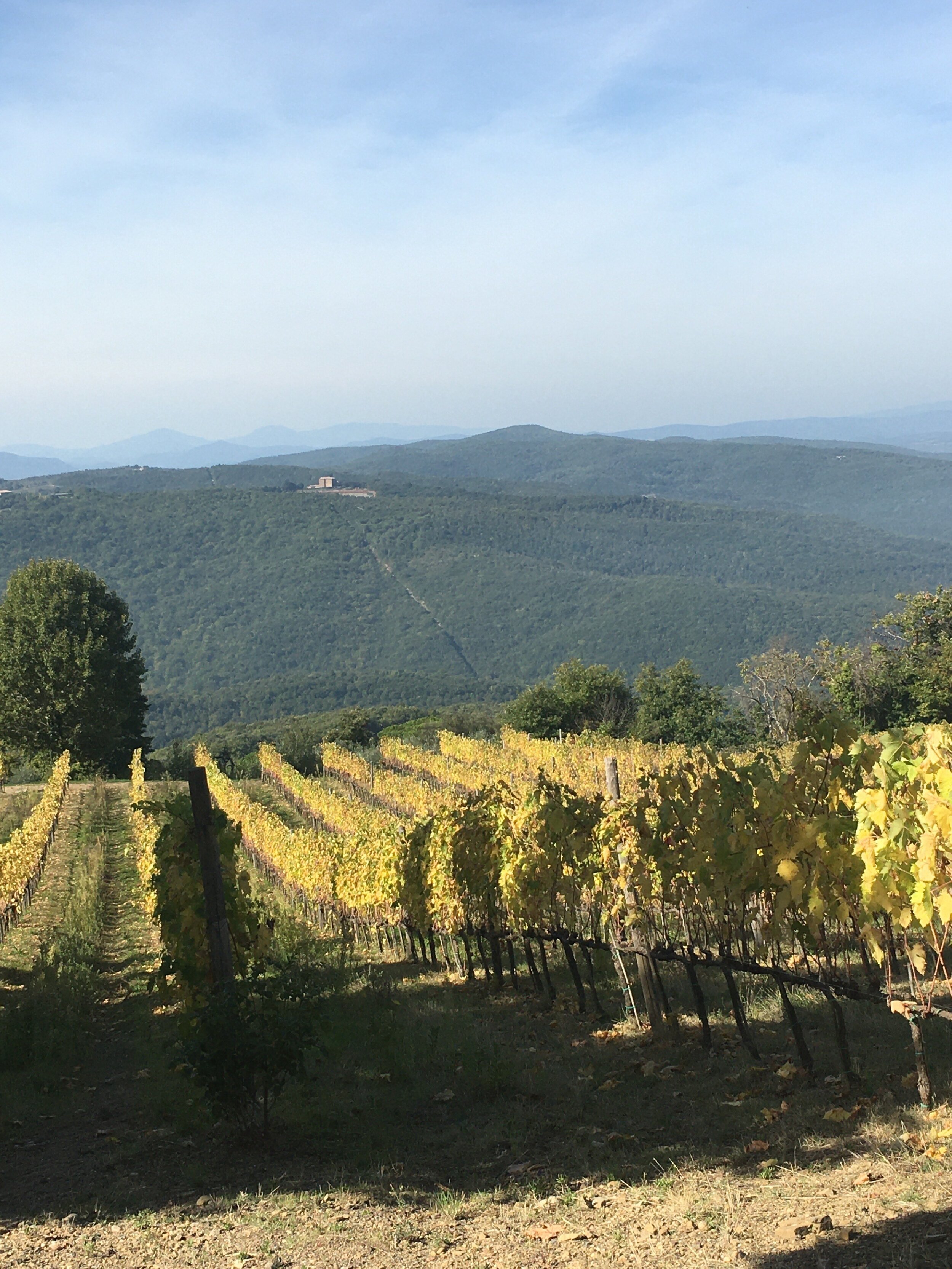Le Due Porte : The Vineyard
We have 1,24 hectares (3 acres) of vineyards planted for the production of Brunello in an area known as Le Due Porte. Our other two vineyards are near Castelnuovo dell’Abate, some 8 km away. We have always picked, vinified and aged our three vineyards separately before blending four years after harvest.
On 5th October 2020, for the first time ever, we are releasing a Brunello made from grapes only from Le Due Porte.
The Le Due Porte vineyards are the ones that surround the cellar, north-west of Montalcino, less than 1km from the town itself. The vineyards are sloping and the exposition is East/West. The soil type is pietraforte arenaria, a type of local sandstone also known as Alberese. There is also clay and sand-loam and a significant presence of rock fragments (scheletro). The vineyards were re-planted in 2004 and vineyard density is circa 4.500 vines per hectare.
Le Due Porte is 540 metres above sea level. Historically high-altitude vineyards in Montalcino were considered with a mix of scorn and pity. Climate change has reversed this and the position of Le Due Porte has become a privileged one. Budbreak is later here, often avoiding issues with late frosts and snow. Ripening is slow and constant. The soil profile preserves humidity; important when making a wine such as Brunello that does not contemplate irrigation. Alberese has high levels of calcium carbonate which favors acidity, aided and abetted by the slower ripening and later harvest due to the exposition and altitude. We generally pick Le Due Porte as much as two weeks after our vineyards in Castelnuovo dell’Abate and are often amongst the last in Montalcino to harvest. The grapes develop organoleptic complexity from that extra hang-time and from the pronounced difference between day and night temperatures. In fact the altitude guarantees extreme thermal excursion even in hotter years which is wonderful for aromatic development.
Over the last two decades we have seen, year after year, a pronounced character emerge in the fruit from this vineyard, a wine that maintains the typical structure of a Brunello vecchio stampo and epitomises finesse and elegance.
We cannot wait to share it with the world.

